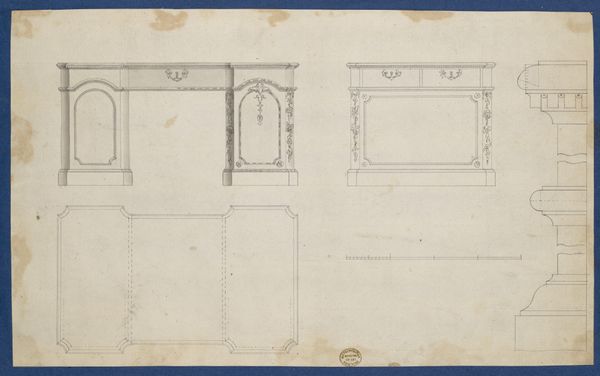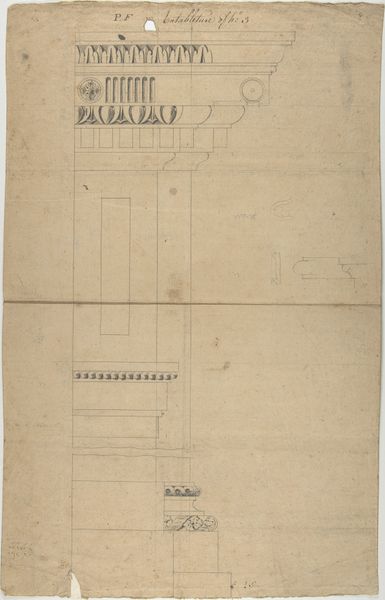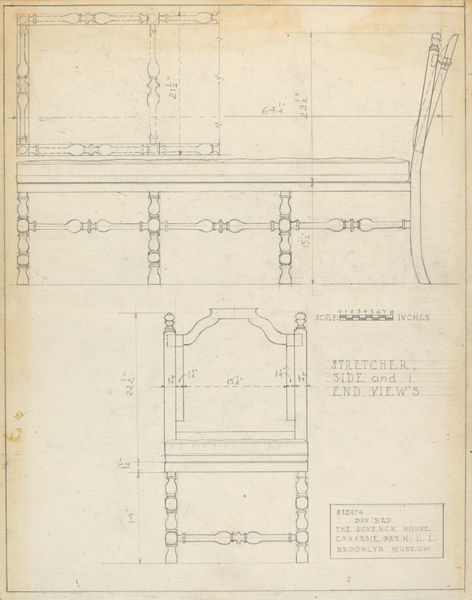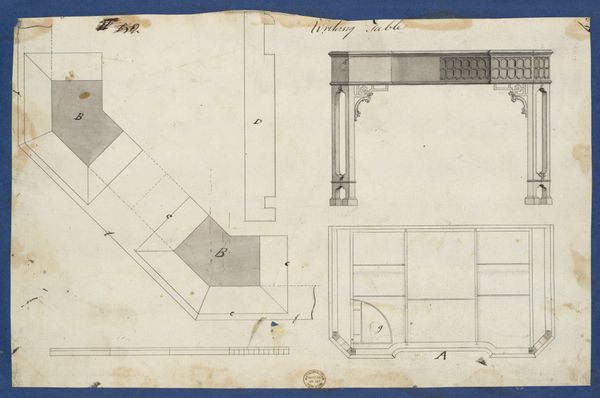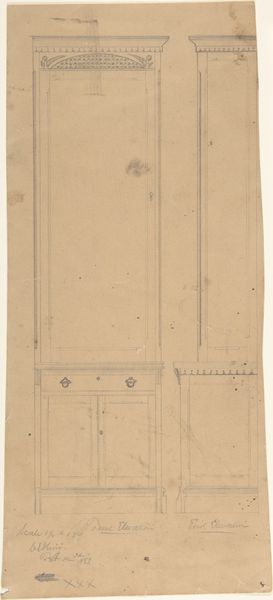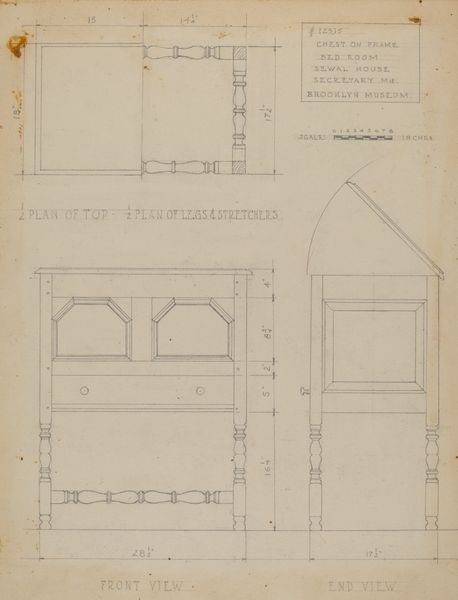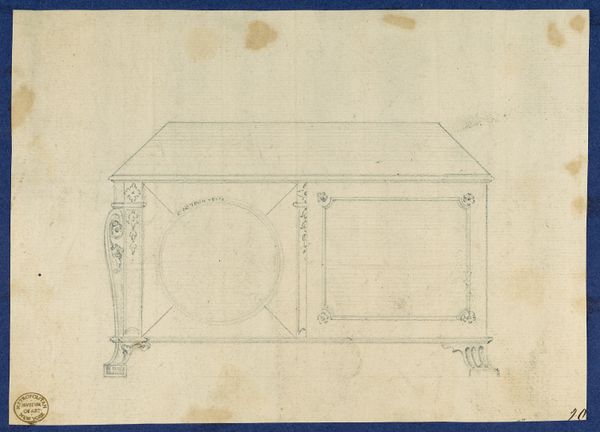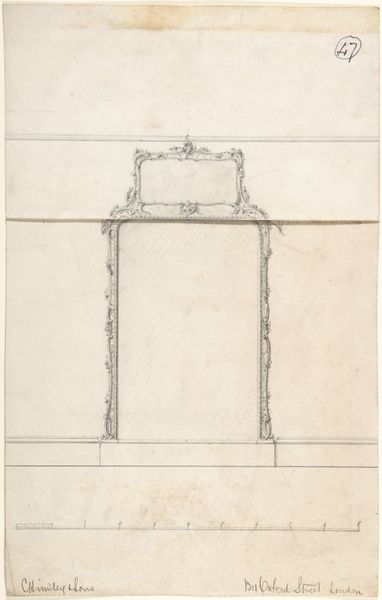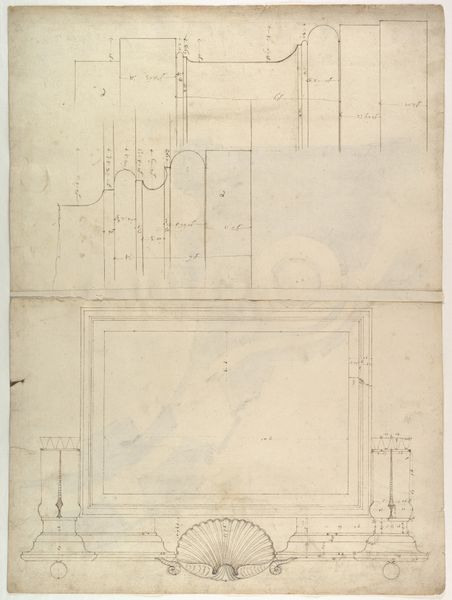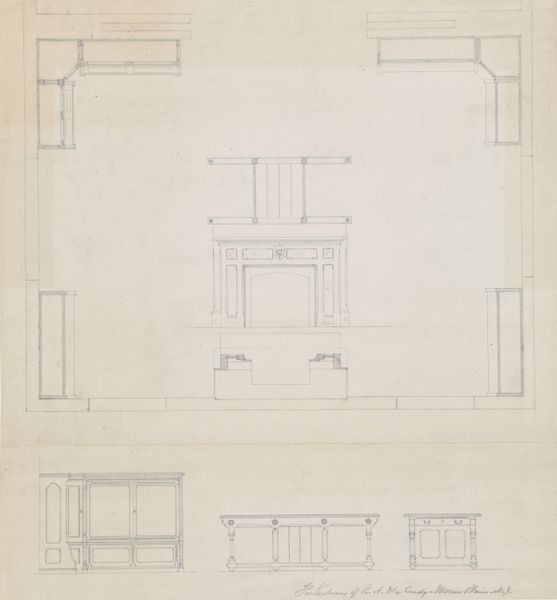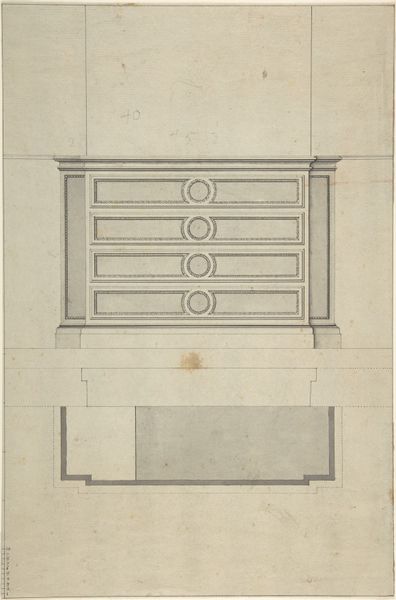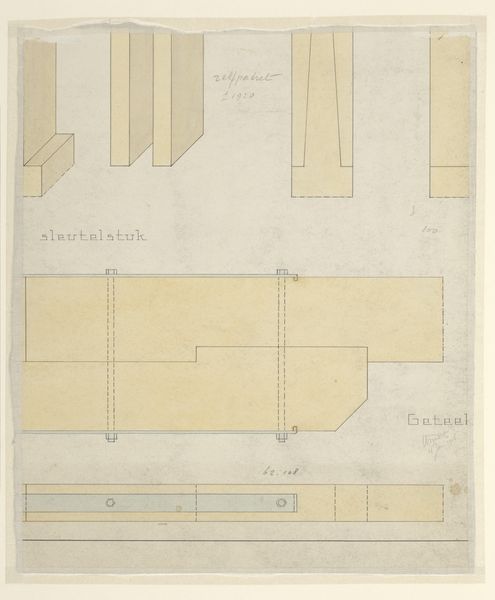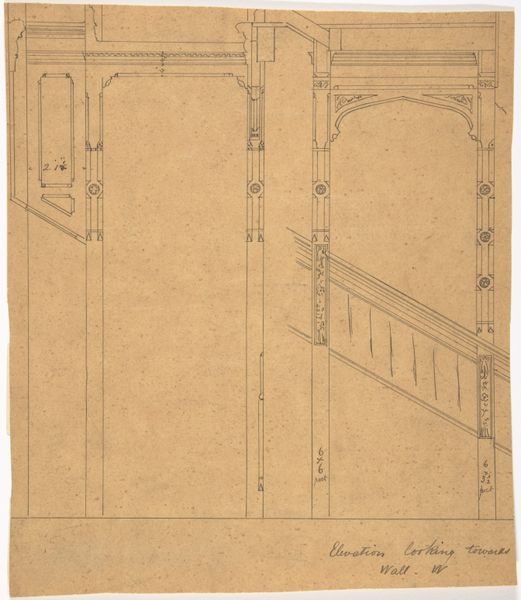
Writing Table, from Chippendale Drawings, Vol. II 1755 - 1765
0:00
0:00
drawing, print, paper, pencil
#
drawing
#
neoclacissism
# print
#
paper
#
form
#
pencil
#
line
Dimensions: sheet: 8 5/8 x 7 9/16 in. (21.9 x 19.2 cm)
Copyright: Public Domain
Editor: So this is "Writing Table, from Chippendale Drawings, Vol. II" created between 1755 and 1765 by Thomas Chippendale, a drawing made with pencil and print on paper. The precision of the lines and the symmetry is what strikes me most. What symbols or historical references stand out to you? Curator: It is fascinating how Chippendale's designs reflect a dialogue between tradition and aspiration. Looking closely, can you discern the echoes of Neoclassicism, blended with a desire for something uniquely British? Notice the carved ornamentation, which is not merely decorative, but a conscious invocation of status and cultivation. It signifies not just function but aspiration. Editor: Yes, now that you point it out, the motifs do speak to a striving for elegance and sophistication! The curved legs and detailed handles - they're not strictly functional. It makes me wonder about the patron who would have commissioned such a piece. Curator: Precisely. Think of the Georgian era, and the rise of a merchant class eager to display their wealth and taste. Furniture, like clothing or architecture, became a powerful language. Consider, too, how this design embodies a sense of order, a rational arrangement of space, reflecting Enlightenment ideals. It is like a stage for performing the act of writing, thinking, conducting business. Do you get that sense as well? Editor: Definitely! It's a carefully constructed world within a piece of furniture. Thank you, I would not have noticed those historical contexts without your guidance. Curator: Indeed, by understanding its symbolism, we see that furniture carries more than just practical use.
Comments
No comments
Be the first to comment and join the conversation on the ultimate creative platform.
